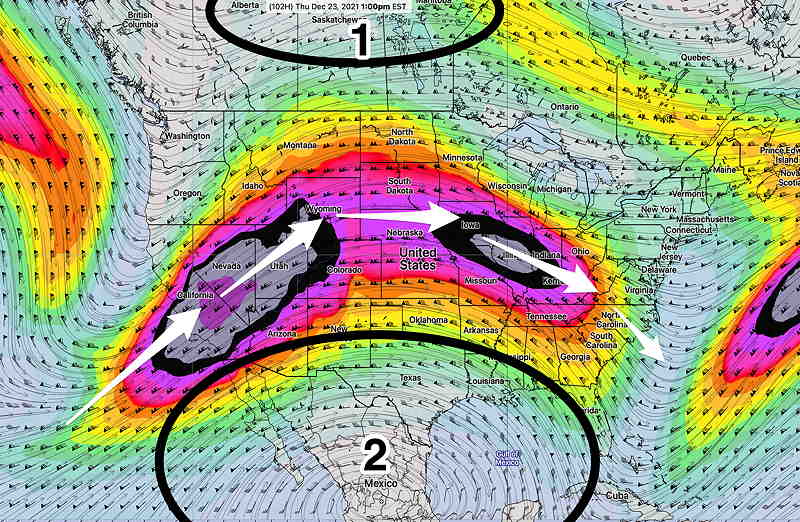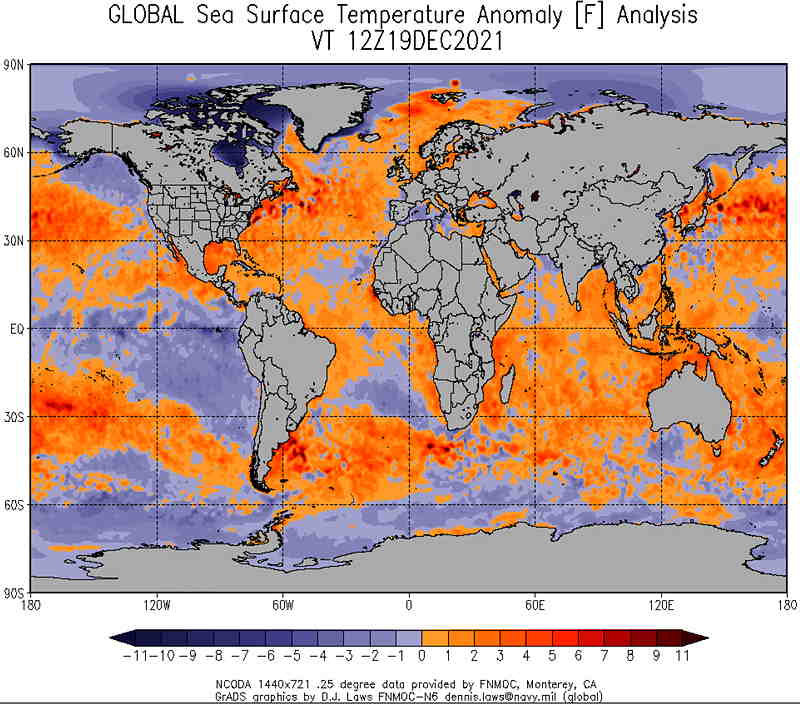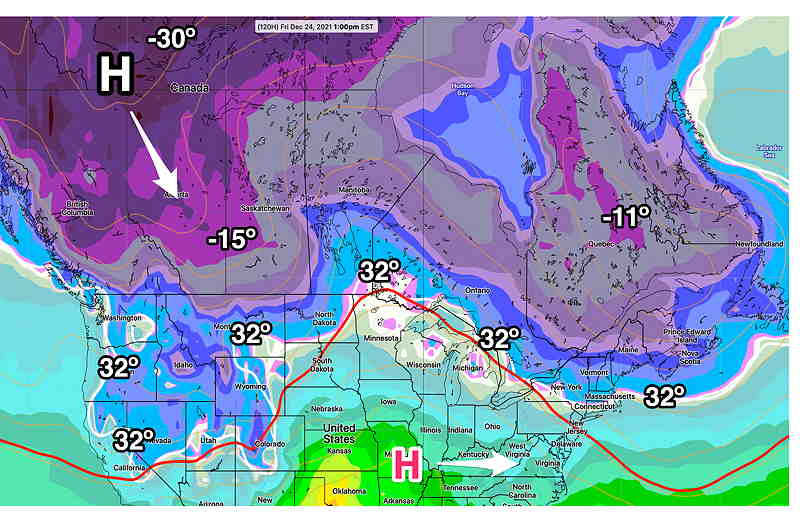Updated with graphic below.
This week’s weather is expected to be influenced by a flat to ridge-shaped jet flow.
I know the TV weather people like to talk about the jet stream as something that has a mind of its own. They talk about changes in the jet stream as something that just changes, without any apparent reason.
Frankly, I don’t think that is all that accurate nor is it conceptually useful.
What makes more sense to me is that the jet stream winds flow confined to the three dimensional valley created between the bulges of the two major air masses. The position of the jet stream and its configuration takes on the shape of the edge of the air masses and the valley between them.

Localized increases in speed of the jet stream (called ‘jet streaks’) are related to narrowing of the valleys between the air masses, just as a garden hose nozzle creates a water jet of increased velocity.
(Indeed, the the name jet stream has little to do with jet airplanes. The stream of air comprising the jet stream displays the physics of “jets” in the field of fluid mechanics, as in the garden hose reference above.)
The movements, size, temperature and densities of the main air masses on the spinning earth determine the changes in the jet wind shape and position. While there certainly is a feedback mechanism where the jet flow reciprocally affects the air mass shape, conceptually, I feel this leads to a poorer grasp of the main determinants of jet stream position and shape.
So why am I talking about this today?
Well, the position of the jet flow this week with its northern position (for December) and bulge northward is the result of the the tropical warm air mass (2 above) being larger than the current colder denser polar air mass to the north (1 above.) Simplistically, there isn’t a larger or dense enough cold air mass to displace the very large warm tropical air mass to the south.
Why is the tropical air mass so warm? Well maybe the ocean surface temperatures, warmed by the atmosphere are maintaining their heat.

People talk about climate change and global warming. This is one of the ways it manifests itself.
Eventually, very dense cold air to our north will accumulate enough that it will bulge downward and push the jet stream position to our south. How the cold air slides down and its shape will determine the new valley position and the new jet stream configuration.
There is some evidence that a pattern change may be setting up, with cold air pooling in far northwestern Canada by Christmas eve. Following a very mild upcoming Christmas weekend, the final week of this year and the first week in January may be positioning itself for a pattern change

